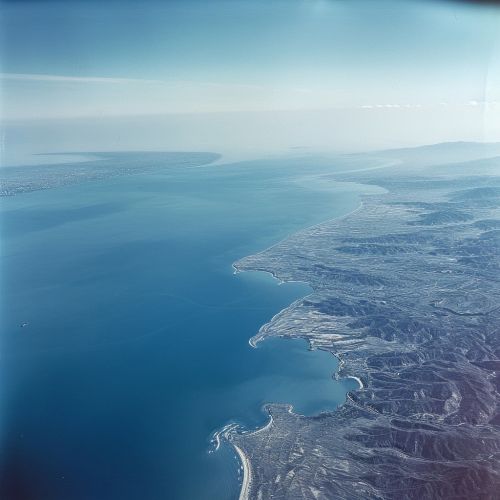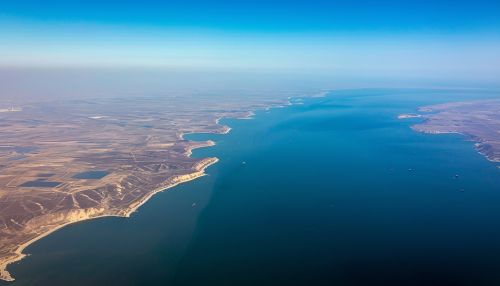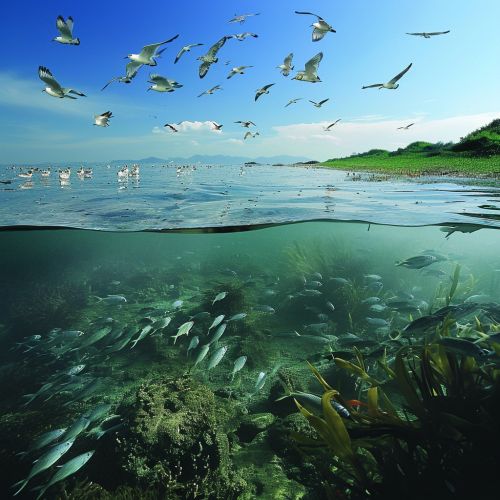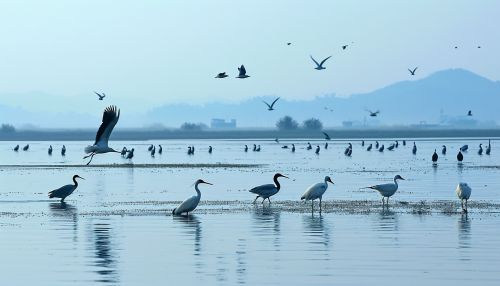Bohai Sea
Geography
The Bohai Sea is a marginal sea of the Western Pacific Ocean, situated on the northeastern coast of China. It is the innermost gulf of the Yellow Sea and separates the region of Bohai Rim from the rest of the East China. The sea is approximately 78,000 square kilometers in size, making it one of the largest inland seas in the world.


The Bohai Sea is bounded by the Chinese provinces of Liaoning, Hebei, and Shandong. The sea's coastline is characterized by significant diversity, with a mix of sandy and rocky beaches, cliffs, and numerous bays and peninsulas. The largest of these peninsulas is the Liaodong Peninsula, which separates the Bohai Sea from the Yellow Sea.
Hydrology
The Bohai Sea has a unique hydrological profile due to its semi-enclosed nature and the influence of various rivers that flow into it. The sea's salinity varies significantly, with the freshest water found near the river mouths and the saltiest water located in the central and southern parts of the sea. The average depth of the sea is approximately 18 meters, with the deepest point reaching 86 meters.
The Bohai Sea experiences two major tidal cycles annually, with the largest tides occurring in spring and autumn. The sea's tides are primarily semi-diurnal, meaning they occur twice daily. The tidal range can vary from less than one meter to over three meters, depending on the location and time of year.
Ecology
The Bohai Sea supports a rich and diverse ecosystem, home to numerous species of fish, shellfish, and marine mammals. The sea's biodiversity is largely due to its varied habitats, which include sandy and rocky shores, mudflats, and seagrass beds.
The Bohai Sea is particularly important for migratory birds, serving as a crucial stopover point on the East Asian-Australasian Flyway. Each year, millions of birds pass through the area, including species such as the Red Knot and the critically endangered Spoon-billed Sandpiper.


Economy
The Bohai Sea region plays a significant role in China's economy. The sea itself is a major fishing ground, providing a significant portion of the country's seafood. In addition, the Bohai Sea is rich in oil and natural gas resources. The Bohai Bay is one of China's most important oil production bases, with numerous offshore drilling platforms.
The sea's coastline is heavily industrialized, with many large cities and ports. The largest of these is Tianjin, one of the busiest ports in the world. Other significant ports include Dalian and Qinhuangdao, which serve as major hubs for the transport of goods and commodities.
Environmental Issues
Despite its economic importance, the Bohai Sea faces numerous environmental challenges. Overfishing has led to a decline in fish stocks, while industrial pollution and agricultural runoff have resulted in significant water quality issues. Oil spills from offshore drilling operations have also posed a threat to the sea's ecosystem.
Efforts are being made to address these issues, including stricter fishing regulations and initiatives to reduce pollution. However, the scale of the challenges means that significant work remains to be done to ensure the long-term health of the Bohai Sea.
